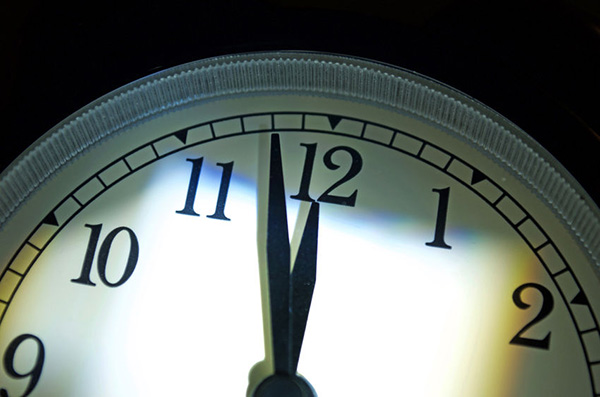
The Clock was created in 1947 by the Bulletin of the Atomic Scientists, an organisation founded in 1945 by University of Chicago scientists who had helped develop the first atomic weapons in the Manhattan Project. The idea was to convey the urgency of the threats facing humanity and the planet by allocating a time, with 20 minutes to midnight being the least urgent and two minutes to midnight warning of imminent danger.
The decision to move (or to leave in place) the minute hand of the Doomsday Clock is made every year by the Bulletin’s Science and Security Board in consultation with its Board of Sponsors, which includes 15 Nobel laureates. The decision is based on a variety of factors, including the rate of nuclear proliferation and the risk (or occurrence) of armed conflict, with climate change having been added to this list a few years ago.
Unsurprisingly, the Clock has never reached the 20 minute mark, although it came close in 1991, when it was set to 17 minutes to midnight. The only other time that humanity wasn’t on the brink of disaster by this measurement was in 1995, when the clock was set to 14 minutes to midnight, followed by 1963 and 1972, which saw us at 12 minutes to midnight.
Since 2017, the Clock has been set to two minutes to midnight. The past two years marked two out of only three years that the Doomsday Clock has been this close to midnight, first reaching the position in 1953 after the US and the Soviet Union tested hydrogen bombs.
The Bulletin of the Atomic Scientists moved the time of the Doomsday Clock closer to midnight because of “reckless approaches toward nuclear weapons” and “a growing disregard for the expertise needed to address today’s biggest challenges, most importantly climate change”. The scientists argued that world leaders not only failed to deal adequately with nuclear and climate threats, they increased them “through a variety of provocative statements and actions, including careless rhetoric about the use of nuclear weapons and the wanton defiance of scientific truths.”
“Humanity now faces two simultaneous existential threats, either of which would be cause for extreme concern and immediate attention. These major threats—nuclear weapons and climate change—were exacerbated this past year by the increased use of information warfare to undermine democracy around the world, amplifying risk from these and other threats and putting the future of civilization in extraordinary danger,” Rachel Bronson, President & CEO of the Bulletin said when the decision to keep the Clock dangerously close to midnight was made.
“The Bulletin of the Atomic Scientists Science and Security Board today sets the Doomsday Clock at two minutes to midnight—the closest it has ever been to apocalypse. Though unchanged from 2018, this setting should be taken not as a sign of stability but as a stark warning to leaders and citizens around the world. The current international security situation—what we call the ‘new abnormal’—has extended over two years now. It’s a state as worrisome as the most dangerous times of the Cold War, a state that features an unpredictable and shifting landscape of simmering disputes that multiply the chances for major military conflict to erupt. This new abnormal is simply too volatile and dangerous to accept as a continuing state of world affairs,” she said.
However, she pointed out that as dire as the present may seem, there is nothing hopeless or predestined about the future. Human beings should be able to manage the dangers posed by the technology that humans create, but that requires that threats be acknowledged before they can be effectively confronted. Unfortunately, too many of today’s leaders are ignoring or glossing over the threats raised by the Bulletin to hope for a change in 2020.
